ANTHEM
Pilot 4.9
Pilot 4.9 aims to create a research and clinical centre for Boron Neutron Capture Therapy (BNCT) in Caserta (Italy), funded not only by the PNC-PNRR but also by the Government of the Campania Region through the “L. Vanvitelli” University. BNCT is an oncology treatment that consists of irradiating cancer patients with low-energy neutrons after loading 10-boron nuclei (10B) into cancer cells. The high cross section of neutron capture in 10B makes the interaction much more likely in boron than in other elements in biological tissues. The 10B(n,α)7Li nuclear reaction produces two charged particles with a high linear energy transfer (LET), whose combined range is comparable to the average size of a cell. Therefore, the damage caused by charged particles is confined within the cell where neutron capture takes place, preserving the surrounding healthy cells (Figure 1).
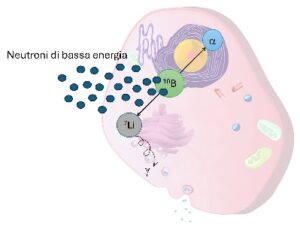
Figure 1: Diagram of the neutron capture reaction in 10-boron inside a cell
This mechanism can be exploited to selectively treat oncological diseases provided that there is an adequate concentration ratio of 10B between tumour and normal tissue. Therefore, BNCT holds great promise for cancers that cannot be treated by other methods due to their localization, spread, extension, or radioresistance. BNCT is the only external beam radiation therapy that guarantees cell selectivity, based on biological targeting.
The new BNCT infrastructure is based on technology developed by INFN to produce an intense neutron beam from an accelerator (RFQ, see Fig.1) capable of generating a 5 MeV, 30 mA proton beam, coupled to a beryllium target and a neutron moderation and collimation system (BSA). This technology, entirely designed and built by INFN, will be the heart of a center that will serve as a hub for BNCT research and for the treatment of tumours that have a poor response to other therapies such as, for example, Glioblastoma Multiforme. The National Laboratories of Legnaro, the Southern National Laboratories, and the Units of Pavia, Naples and Turin of INFN are participating in this project. The construction of the centre is not only funded by the PNC-PNRR but also by the Government of the Campania Region through the University “L. Vanvitelli”.

Figure 2: the RFQ accelerator mounted on the support at the Legnaro National Laboratories
University of Campania “L. Vanvitelli” oversees the design of the building that will contain the accelerator and the research and treatment rooms, as well as the laboratories and rooms for patient preparation. The design of the building has been realized by the Company Alcotec (https://alcotec.it/).
Figure 3 shows the rendering of the centre, located in an area where other installations will be constructed.
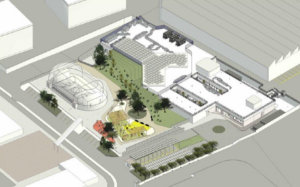
Figure 3: rendering of the BNCT installation with other facilities in the area.
Figure 4 shows the layout of the centre, comprising the technical areas (for the accelerator and its ancillaries), the irradiation room for patients, the room for research experiments, the areas for patients preparation, the laboratories and the room for post-irradiation.
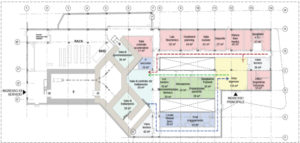
Figure 4: Layout of the facility.
Figure 5 shows the 3D rendering of the building with the accelerator and its ancillaries.
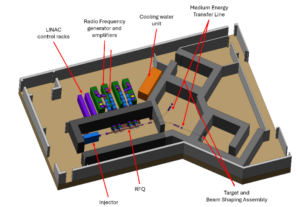
Figure 5: 3D structure of the BNCT installation with the technology installed
Thanks to the long research experience in BNCT carried out in Italy, and with several international collaborations, the goal is to promote global innovation in BNCT, integrating different aspects that are normally addressed separately. The vision is to exploit the knowledge generated in basic research and technological development in a more structured way. BNCT is a complex field, where treatment efficacy depends on the interaction between various factors, including the physical quality of the beam, the radiobiological response of the irradiated tissue, and the specifics of the treatment plan.
Particular attention will be given to the implementation of more refined dosimetry and microdosimetry methods, able to interpret and predict the clinical results obtained in previous studies, and to the production of new radiobiological data useful to better understand the dose-effect relationship in BNCT. Models and data will be integrated into the treatment planning software, which will allow for more personalized and precise dosimetry.
A real innovation in BNCT can only derive from the knowledge produced through basic research and a significant improvement will be obtained by systematizing and coherently applying the important information acquired so far, representing a significant step towards a new clinical reality in Italy.


